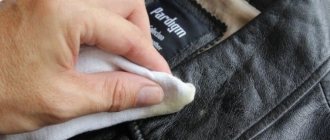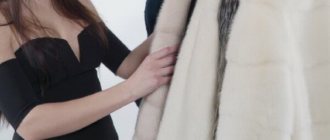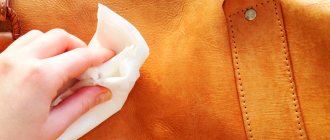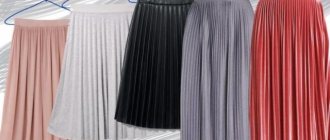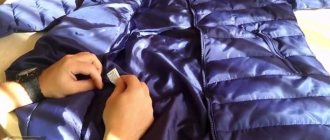To straighten out lumps in a down jacket, you need to shake the clothes, try to soften and fluff up the caked areas with your hands. There are a number of ways to additionally process stray fluff, one of which will definitely help.
If something went wrong and lumps appeared
A sign that the filler has gone astray is the presence of tubercles and compactions. The first thing is to use the same washing machine.
This method is effective and simple. Turn the down jacket inside out and place it in the drum along with 3-4 tennis balls. They can be successfully replaced by small plastic balls, wooden cubes or other smooth ones of similar weight.
Advice. Choose heavy objects so that they break up clumps of fluff or filler well. Light rubber balls do not cope well with this task.
The machine starts in re-spin mode if the jacket is still damp. For a dry jacket, set the mode with rinsing and spinning. Although for dry clothes they use only a spin with balls.
As the drum rotates, the balls will hit the clothes, breaking up the fluff. If everything was not straightened out the first time, then the cycle is repeated. The jacket is removed from the drum and beaten by hand. The fluffy filler will separate in volume on its own.
Required Tools
In order to fit a down jacket to your figure, you need to decide on the final size. In this case, you need to have items with which you can sew the product:
To begin with, you should put on the item and look at yourself in the mirror. After this, decide on the width to which you plan to fit the down jacket. Excess fabric is measured with a ruler, after which the product is turned inside out. Warm winter clothes are sewn only at the side seams. The down jacket should be turned inside out and the lining should be carefully ripped open with small scissors.
Mechanical method
After the item has completely dried, the following operations should be performed one or more times.
Fluffing using a stick. You will need a flexible stick, for example, for beating out carpets, or a plastic handle from a mop or brush. Even a jump rope will do. The main thing here is not to overdo it, so as not to damage the fabric.
Fasten the down jacket and beat it several times. Lay it out with the sleeves outstretched on the bed or sofa and straighten it thoroughly. Lightly beat the filler over the entire surface. The stick should lie flat. Repeat the procedure on the other side. Process the front and back several times. Shake the jacket vigorously and smooth out the remaining lumps with your fingers.
The procedure can also be carried out suspended on a rope, as when knocking out dust, but the effect will be weaker.
Important point. When knocking out, carefully treat the areas near the pockets and in the lower part. They take longer to dry, and excess moisture leads to more lumps of filler.
Sewing a down jacket at home
There are down jackets that are treated with adhesive tapes on the inside. It is necessary to remove the glue from such a thing. If it remains, difficulties will arise in your work, because sewing over such fabric is much more difficult.
For further work, take tracing paper. It is applied from below and above the product - strictly along the seams. After this, use a pen to draw a stitching line directly on the tracing paper. The lowest point is also marked on the down jacket. Now you need to mark half the distance from the edge of the stitching to the fit line. Use a pen to connect two points. It is very important to do this so that later there are no gathers in the allowance area on the front side of the product.
Next, one line is made on the machine along the intended line, after which the tracing paper is removed. Now all that remains is to remove the factory stitching. This is done with scissors or a steam ripper from the bottom up . Then the allowance is cut off 1 cm from the new line.
In many products, the seam is stitched from the inside with duplicating material. In this case, it must be restored using an iron and non-woven tape. To prevent the iron from leaving marks on the product, it should not be held in one place for too long. The allowance is glued in a zigzag manner.
There is a seam on the lining of the down jacket through which it can be turned inside out. Then it should be ripped open and the lining should be sewn along the side seams at the same distance. The lining is then connected to the outside and to both sides of the product. That's it, the hole can be sewn up completely.
Temperature effect
If the down in your down jacket has become loose after washing, one of the following procedures will help.
- Using an iron and a dust blower. It will take about two hours to implement the method, but the result is guaranteed. Straighten the down jacket on a solid base and use a beater to go over all the knotted areas. Turn inside out. Prepare gauze or thin cotton fabric. The jacket is smoothed through it. The presence of steam will speed up and facilitate the process. Repeat the procedure 3-4 times. Between approaches, the item should have time to cool completely.
- You can restore a down jacket by changing the temperature regime. In winter, after drying, the jacket is placed in the cold. Then the item is brought into the room to warm up. After 3-4 hours, the procedure is repeated. Each time the jacket needs to be pinched, fluffed and shaken. The product must go through several cycles. The contrasting effect of temperatures helps soften and fluff the matted filler. Finish processing by kneading manually.
Blow drying
At home, you can restore outerwear to its original appearance using a hairdryer.
What do we have to do:
- Unfold the down jacket, slightly damp after washing, on a horizontal surface.
- Turn the hairdryer on cool and direct the air flow onto the ball of fluff. Help straighten the matted insulation with your hands.
- Work through the entire jacket and shake it at the end.
Do not use hot air as it can make the down more brittle and the clothes will become unusable.
Advantages of the method:
- rapidity;
- dries the filler well, which guarantees the absence of an unpleasant odor.
Minuses:
- You will need a hairdryer with a cold air setting;
- you need to help level the filler with your hands.
Our conclusion: This method deserves an average rating. Still, the air pressure is not enough to break large lumps completely. You have to do a lot of straightening by hand.
Air blowing
- With a vacuum cleaner. For these purposes, you need a vacuum cleaner that has a reverse air supply. It can be replaced with a small household compressor, for example, for painting. Place the down jacket in a plastic bag without holes. Place the vacuum cleaner tube there and tie the edge with a ribbon. Then suck out all the air. The result will be vacuum packaging. Then use reverse and start pumping air back. Change the feeding direction several times until the desired result is achieved. Finally, shape the product with your hands and shake it. 15-20 minutes are enough to bring the down jacket back to life.
- Household hair dryer. The device is used with a stream of cold air. The flow is directed inside the product, and with the other hand, the filler under the material is straightened. The procedure will help speed up the drying of a still damp down jacket. Using warm air will cause the fabric to overheat, which is not desirable.
Useful tips
If suturing is being done for the first time, experts recommend pinning the excess part with needles during fitting. You can draw a stitching line using a piece of dry soap. It is carried out near the seam, outlining the planned shape of the product. If there are reliefs at the back of the down jacket, then the seams will have to be aligned.
The lining is ripped out, as are the side seams of the garment. Then it is folded right side out, and a stitch is made in the intended place. When gripping the lining, all stitches must converge. This will allow you to get excellent results. Now the down jacket can be turned inside out.
After finishing work, you should carefully inspect the product. There should be no pieces of fabric or thread sticking out there. If everything is in order, then the down jacket is ready for use. Children's down jackets are also sutured.
It is worth considering that down products have different thicknesses, and the down itself is enclosed in a capsule, and when it is damaged, the product becomes unusable. You should also choose the right threads and accessories. If you don’t have sewing skills, you shouldn’t risk it so as not to completely ruin the item.
Steam treatment
Steam treatment successfully removes loose filler. For these purposes, use an iron with a steam function or a steam generator.
To steam, hang the down jacket on hangers and run a brush with steam over the surface on both sides. The distance from the brush to the product must be maintained at 15-20 cm. You should start from the top of the back, gradually moving to the sleeves and shoulders. The processing direction should be from top to bottom. Vertical steam will fluff up crumpled holofiber, fluff or padding polyester. Finally, the jacket should be wiped with a dry cloth.
If you don’t have a steam device, the traditional and simple method will help. To do this, fill the bathtub with hot water, and hang the jacket above the surface from which steam rises. The item must be kept like this for several hours, periodically shaking and straightening it with your hands. As a result, the filler will straighten and fluff up, and the upper fabric will get rid of folds and creases.
Steam exposure in any of the ways will give the down jacket a presentable appearance, refresh it and get rid of clumps.
Errors
A few common mistakes:
- do not soak your down jacket;
- do not try to bleach the item;
- Temperatures above 30°C are harmful to the product;
- soaking or washing entirely is not recommended if feathers or fluff have come out, as this will aggravate the situation;
- do not put several down jackets in the car at once, especially together with other things;
- if the down jacket takes a very long time to dry, place it at a safe distance from the heating device, but the drying time should be a maximum of 48 hours;
- if you dry an item, do not place it on a cloth, as this interferes with air circulation, which leads to a musty smell;
- regularly beat the product and do not allow it to dry in a crumpled form.
If the down item is slightly dirty, it is better to simply wash it. Use a gentle detergent for this. Typically, the material of a down jacket is impregnated, which protects the down filling it from moisture. It is better to wash a down jacket in the spring, as is fluffing it, when warm clothes are put away until the next season.
Original fluffing method
When time-consuming and tedious actions do not bring the desired success, proprietary methods invented by users come to the rescue.
Combine drying and straightening down into one task. To do this, the item is straightened out on a wire dryer or hung. And here comes the main point - you need a professional compressor with a nozzle. A powerful air flow will create a pneumatic shock necessary for blowing and whipping the filler. The nozzle must be moved over the entire surface for uniform impact. A vacuum cleaner and a hair dryer cannot do this task.
Remaking things in the studio
To be comfortable in a warm product, it must fit your figure well. If suddenly such a thing has become large, and there are doubts that you will be able to redo it yourself, then it is better to trust the specialists.
Typically, the studio accepts products of all styles and types, with any filling, from various materials. Specialists adjust the item to your figure, adjust the fit of the sleeves, the volume in the chest, waist and hips. Sometimes the zipper is replaced.
Any finished item has its own characteristics - decor, type of stitching, tags.
Specialists will not only be able to adjust the product to size, but will also transfer all elements, for example, pockets. The studio adjusts the item according to the client’s height, and also eliminates wear defects. At the request of the customer, the item can be completely altered. The inspector assesses the complexity of the work and, together with the client, selects the optimal solution. After that, he announces the final cost of the work. If the contract has not yet been signed, the client has the right to refuse services. Many studios accept urgent orders, which are completed fairly quickly, depending on workload.
If we talk about the cost of services in the studio , it will be much lower than buying a new product. The end result will be great and the down jacket will fit perfectly.
How to avoid lint getting lost
Following the basic rules for caring for your down jacket will help avoid the formation of lumps.
- Wash products only in warm water up to +30°.
- Detergent only liquid for delicate washing.
- Machine wash cycle “delicate”.
- Medium spin mode – up to 600 rpm.
- Use the extra rinse mode.
- Washing with tennis balls or balloons will prevent the insulation from bunching up.
- Rinsing with conditioner helps soften the fabric and makes it easier to distribute the filler.
- After washing, shake the damp item and beat thoroughly.
- Hang the jacket on a hanger or lay it out on the dryer.
- Dry the down jacket in natural conditions, periodically shaking and straightening the seals.
Advice. Immediately after removing it from the washing machine, it is recommended to leave the still damp down jacket in the cold. Because of the cold, the fluffs will freeze and will not bunch up into lumps.
- The down is able to recover until it dries completely, and this time should be used to remove clumps.
If none of the rescue measures helped, then you can contact a professional dry cleaner to restore the down jacket.
Specialized products for washing down products
In order for a puffed jacket to retain its thermal insulation properties longer, you need to take a responsible approach to the cleaning process. Typically, information on how to wash a product correctly is placed on sew-in labels. You can use machine wash if there is a corresponding icon.
To avoid having to take a long time to bring your jacket back to its original form, use specialized products. They have a number of advantages over conventional washing powders:
- prevent the formation of lumps;
- effectively remove dirt;
- treat fabrics with care;
- do not leave streaks;
- give the product a pleasant smell.
The list of the best products for washing outerwear at home includes:
- Gel Heitmann. The product was made in Germany. It helps the fluff fall off less and removes stains from fabric well. Can be used for both machine and hand washing. It is not cheap, but it is used economically.
- Gel Woly Sport. Allows you to return the original appearance not only to down jackets, but also to membrane clothing with synthetic padding. It successfully removes most stains, but has a rather strong odor.
- Gel Unipukh. Inexpensive and effective product made in Russia. Does not leave streaks even on dark fabrics and helps maintain the volume of insulation. After washing with gel, it does not take long to break up lumps. To restore the fluffiness of the jacket, just shake it after drying. The product is good because it does not contain aggressive compounds.
- Gel Domal “Sport Fein Fashion”. Inexpensive and economical product made in Germany. Helps revive a down jacket after intense wear. Among the disadvantages is the need for pre-washing in case of serious contamination.
- Laska gel “Magic balm”. This is not a specialized product for clothes with down, but it helps to even out the insulation just as well as other gels. It is inexpensive and available in every store. The downside is the strong smell.



